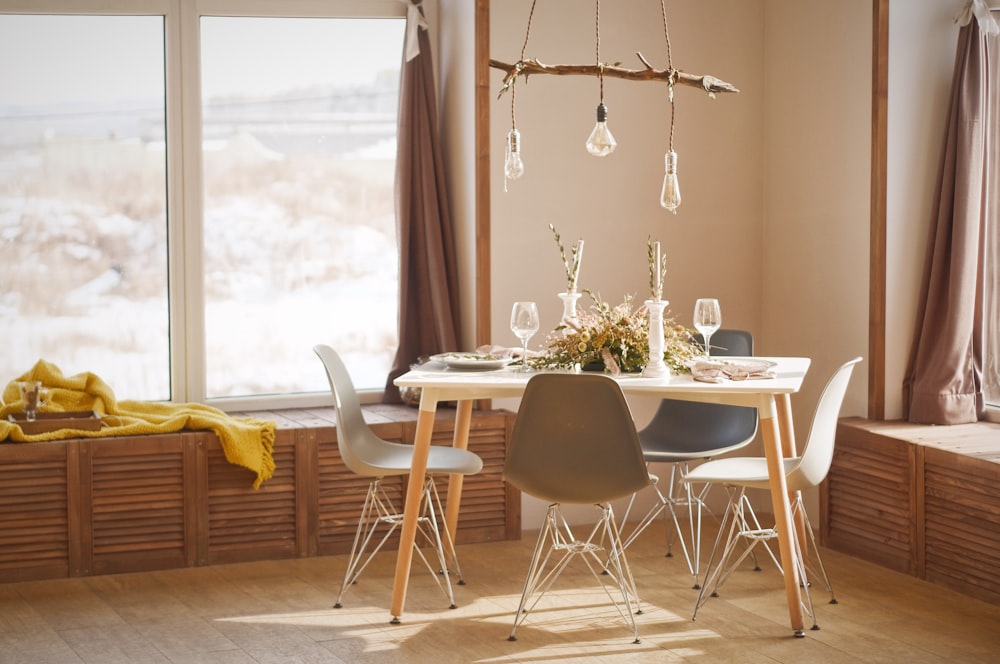Illuminating Spaces: Interior Lighting Design Essentials
Unveiling the Power of Interior Lighting
When it comes to interior design, lighting plays a crucial role in setting the mood, enhancing functionality, and highlighting architectural features. From ambient lighting to task lighting and accent lighting, each type serves a specific purpose in illuminating spaces effectively. Let’s delve into the essentials of interior lighting design to create inviting and visually stunning environments.
Understanding the Different Types of Lighting
The first step in mastering interior lighting design is understanding the different types of lighting and their respective functions. Ambient lighting provides overall illumination to a room, while task lighting is focused on specific areas for activities such as reading or cooking. Accent lighting, on the other hand, highlights decorative elements and adds visual interest to the space. By combining these types of lighting strategically, you can create layers of light that cater to various needs and preferences.
Choosing the Right Fixtures for Your Space
Selecting the right fixtures is crucial in achieving your desired lighting effects. From chandeliers and pendant lights to recessed lighting and track lighting, there’s a wide range of options to choose from to suit your style and space. Consider factors such as the size and scale of the room, the ceiling height, and the overall design aesthetic when selecting fixtures. Opt for fixtures that complement the architecture and décor of your home while providing the necessary illumination for each area.
Creating a Balanced Lighting Scheme
Achieving a balanced lighting scheme involves finding the right balance between different types of lighting and fixtures. Start by establishing a focal point in each room and layering lighting around it to create depth and dimension. Use a combination of overhead lighting, task lighting, and accent lighting to illuminate different areas effectively. Pay attention to the placement of fixtures to ensure even distribution of light throughout the space.
Enhancing Mood and Atmosphere with Lighting
Lighting has the power to influence the mood and atmosphere of a room significantly. Warm lighting with yellow undertones creates a cozy and intimate ambiance, perfect for bedrooms and living rooms. Cool lighting with blue undertones, on the other hand, has a more energizing effect and is ideal for kitchens and workspaces. Experiment with different color temperatures and dimming options to create the desired atmosphere in each room.
Embracing Natural Light
Natural light is an essential element in interior lighting design, as it not only provides illumination but also enhances the overall aesthetic of a space. Maximize natural light by using sheer curtains or blinds to allow sunlight to filter into the room. Position furniture strategically to take advantage of natural light and create bright and airy spaces. Consider incorporating skylights or windows to bring in more natural light and connect indoor spaces with the outdoors.
Utilizing Lighting Controls and Technology
Advancements in lighting controls and technology have revolutionized interior lighting design, allowing for greater flexibility and customization. Install dimmer switches to adjust the intensity of light according to the time of day and the desired mood. Incorporate smart lighting systems that can be controlled remotely via smartphone or voice commands for added convenience and efficiency. Explore options such as color-changing LED bulbs and programmable lighting scenes to create dynamic and immersive lighting experiences.
Personalizing Your Lighting Design
One of the most exciting aspects of interior lighting design is the opportunity to personalize your space according to your tastes and preferences. Experiment with different lighting fixtures, colors, and intensities to create a unique and inviting ambiance that reflects your personality and style. Incorporate statement pieces such as chandeliers or pendant lights to add drama and visual interest to the space. Don’t be afraid to get creative and think outside the box when designing your lighting scheme.
Considering Energy Efficiency and Sustainability
In addition to aesthetics and functionality, it’s essential to consider energy efficiency and sustainability when designing your lighting scheme. Opt for LED bulbs, which are more energy-efficient and longer-lasting than traditional incandescent bulbs. Use lighting controls and timers to reduce energy consumption and minimize waste. Consider incorporating daylighting strategies such as skylights and light shelves to reduce the need for artificial lighting during the day. By making conscious choices about lighting design and technology, you can create beautiful and sustainable spaces that benefit both the environment and your well-being. Read more about interior lighting design





